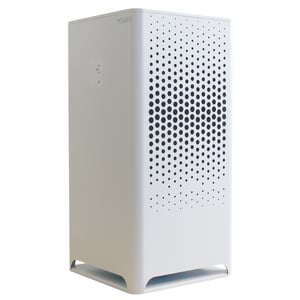

We are an official sponsor of the Swedish Pavilion at EXPO 2020 Dubai that started on October 1st, 2021 and will conclude on March 31st, 2022. Our sustainable, energy-efficient solutions improve the indoor air quality at the pavilion and ensure that visitors enjoy an ambient atmosphere. Our solutions are supported by state-of-the-art research and technology and the pavilion is equipped with air quality sensors that monitor the clean air and PM levels.




Clean air indoors is possible using sustainable, reliable, state-of-the-art solutions. At the Swedish pavilion, our goal is to provide high-quality indoor air and ensure a safe, healthy indoor environment. Our air quality sensors monitor and observe the data that is displayed on the screens. This ensures the traceability and effectiveness of our solutions. - Stéphane Ruiz, Managing Director, Middle East & Africa, Camfil
At the Swedish pavilion, our goal is to provide high-quality indoor air and ensure a safe, healthy indoor environment.



Dynavane is designed to provide long, trouble-free service under the most difficult conditions. Climate close to dessert areas can be challenging and dust is one of the major setbacks that can lead to many health problems and hamper the functionality of the processes.
We all want to make sure that we eat clean, nutritional food, drink safe, freshwater but do we know how clean is the air we breathe that we absolutely rely on. For a simple comparison, we eat around 1 kg of food and drink 2 kgs of fluid per day but we breathe 15 kgs of air per day. Now, this is a number we should not ignore. A big part of the population lives and works in areas where the rates of pollution particles exceed WHO guidelines. Camfil is at the forefront of the growing international movement to reduce the negative health effects of polluted air.
Ventilation and good indoor air quality concern everyone. Whether you are an investor, architect, consultant, developer, installer or end-user, you’re invited to join us! "The future of sustainable HVAC- Trends and innovations", took place on 10 November 2021 onsite at the EXPO 2020. Lars Kristensen, Senior Director, Eastern Europe, Middle East & Africa, Camfil highlighted some key concerns and solutions that redefine indoor air quality and how we can assure a clean, sustainable indoor environment using air filtration solutions.
Understand the importance of indoor air quality
We all know that air pollution is bad for human health. New research indicates the smallest particles in the air are the most dangerous. To provide a healthy and productive indoor air environment, the focus should be put on filtering particles that are 1 μm (micrometre) or smaller in diameter – particles also known as PM1 (Particulate Matter 1).